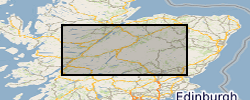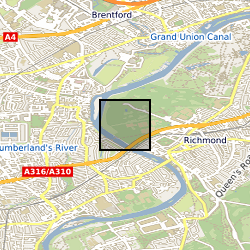Magnetic disturbances
Type of resources
Topics
Keywords
Contact for the resource
Provided by
Years
Formats
Representation types
Update frequencies
-

Magnetotelluric (MT) time series including the September 2017 magnetic storm at 7 sites in the Scottish Highlands collected by Fiona Simpson (University of Southampton) and Karsten Bahr (University of Göttingen) using Göttingen RAP dataloggers, Magson fluxgate magnetometers and Filloux-type electrodes. Data acquisition methodology is described in F. Simpson and K. Bahr, 2005. Practical Magnetotellurics, Cambridge University Press, London pp. 254, 2005, ISBN: 9781108462556, DOI: 10.1017/CBO9780511614095 This dataset is described in: F. Simpson and K. Bahr, 2020a. Nowcasting and validating Earth’s electric field response to extreme space weather events using magnetotelluric data: application to the September 2017 geomagnetic storm and comparison to observed and modelled fields in Scotland, Space Weather, accepted, doi pending. F. Simpson and K. Bahr, 2020b. Estimating the electric field response to the Halloween 2003 and September 2017 magnetic storms across Scotland using observed geomagnetic fields, magnetotelluric impedances and perturbation tensors, Journal of Space Weather and Space Climate, accepted, doi pending.
-

This dataset is the most complete digitised magnetic records (as of Nov 2023) of the ten-day period from 25th August to 5th September 1859 encompassing the Carrington storm and its lesser recognised precursor on the 28th August. Based on digital images of the magnetograms from the BGS online archive collection and information from the observatory yearbooks and scientific papers, it is possible to scale the measurements to SI units (degrees of angle and nanoTesla) and extract quasi-minute cadence spot values. The contents of the zip file are various data in ASCII text files plus a readme and example code for plotting the data file; • README.txt - small text file • plot_Carrington1859_paper_plots_with_correlation.py - example code in Python3.7 to create plots • bartels : folder containing digitised KEW data from Bartels (1937) paper • hdz : folder containing extracted KEW and GRW data in single files with time, Horizontal (H), Declination (D) and Vertical (Z) magnetic field components • IAGA2002 : folder with KEW and GRW data in IAGA-2002 formatted files with standard headers • spot_values : GRW spot values taken from the 1859 yearbook tables in csv and txt files
-

Magnetotelluric data for the Halloween 2003 magnetic storm in the vicinity of Uppsala (UPS), Sweden and Eskdalemuir (ESK), Scotland geomagnetic observatories synthesized from geomagnetic observatory data from INTERMAGNET. The data were generated to facilitate comparison of the ground effects of the Halloween 2003 magnetic storm in Sweden and Scotland. The data demonstrate the greater risk of hazardous storm-time electric fields being generated in southern Sweden compared to central Scotland and are further described in the gold open access paper: F. Simpson and K. Bahr, 2020a. The role of tectonic-plate thickness and mantle conductance in determining regional vulnerability to extreme space weather events: possible enhancement of magnetic source fields by secondary induction in the asthenosphere. Space Weather, accepted, doi pending. The synthesis technique that enables electric fields to be estimated from geomagnetic observatory data is described and validated in the following gold open access papers: F. Simpson and K. Bahr, 2020b. Nowcasting and validating Earth's electric field response to extreme space weather events using magnetotelluric data: application to the September 2017 geomagnetic storm and comparison to observed and modelled fields in Scotland, Space Weather, 18, e2019SW002432, https://doi.org/10.1029/2019SW002432. F. Simpson and K. Bahr, 2020c. Estimating the electric field response to the Halloween 2003 and September 2017 magnetic storms across Scotland using observed geomagnetic fields, magnetotelluric impedances and perturbation tensors, JSWSC, swsc200019, 10, (48), https://doi.org/10.1051/swsc/2020049.
 NERC Data Catalogue Service
NERC Data Catalogue Service